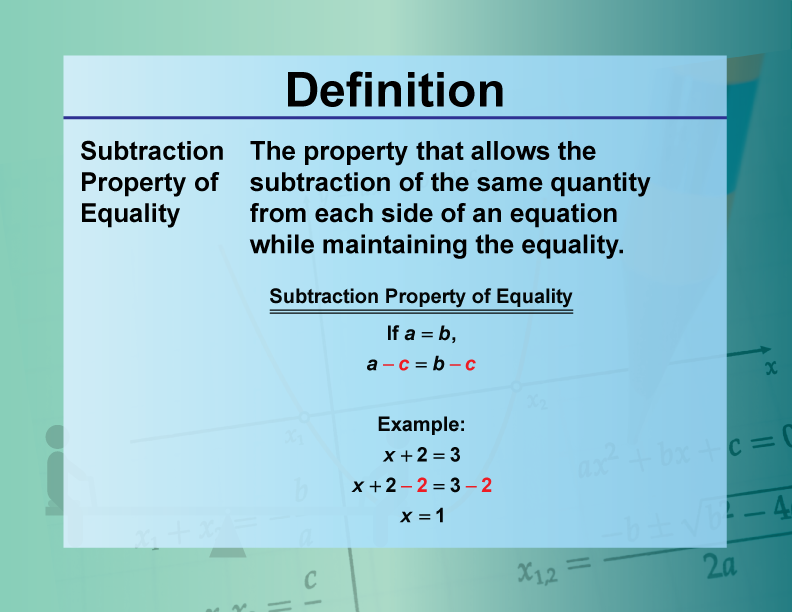
Display Title
Definition--Equation Concepts--Subtraction Property of Equality
Display Title
Subtraction Property of Equality

Topic
Equations
Definition
The Subtraction Property of Equality states that if you subtract the same value from both sides of an equation, the equality remains true.
Description
The Subtraction Property of Equality is a fundamental principle in algebra. It states that for any real numbers a, b, and c, if
a = b, then a − c = b − c
This property is used to solve equations by isolating variables. For example, to solve
x + 3 = 7
you subtract 3 from both sides to get x = 4.
This property is applied in various real-world contexts, such as balancing accounts or adjusting quantities. Understanding the Subtraction Property of Equality helps students solve equations and understand the balance of mathematical relationships.
For a complete collection of terms related to functions and relations click on this link: Functions and Relations Collection
| Common Core Standards | CCSS.MATH.CONTENT.6.EE.B.5, CCSS.MATH.CONTENT.7.EE.B.4, CCSS.MATH.CONTENT.HSA.REI.A.1 |
|---|---|
| Grade Range | 6 - 12 |
| Curriculum Nodes |
Algebra • Expressions, Equations, and Inequalities • Applications of Equations and Inequalities |
| Copyright Year | 2021 |
| Keywords | equations, solving equations, definitions, glossary terms |